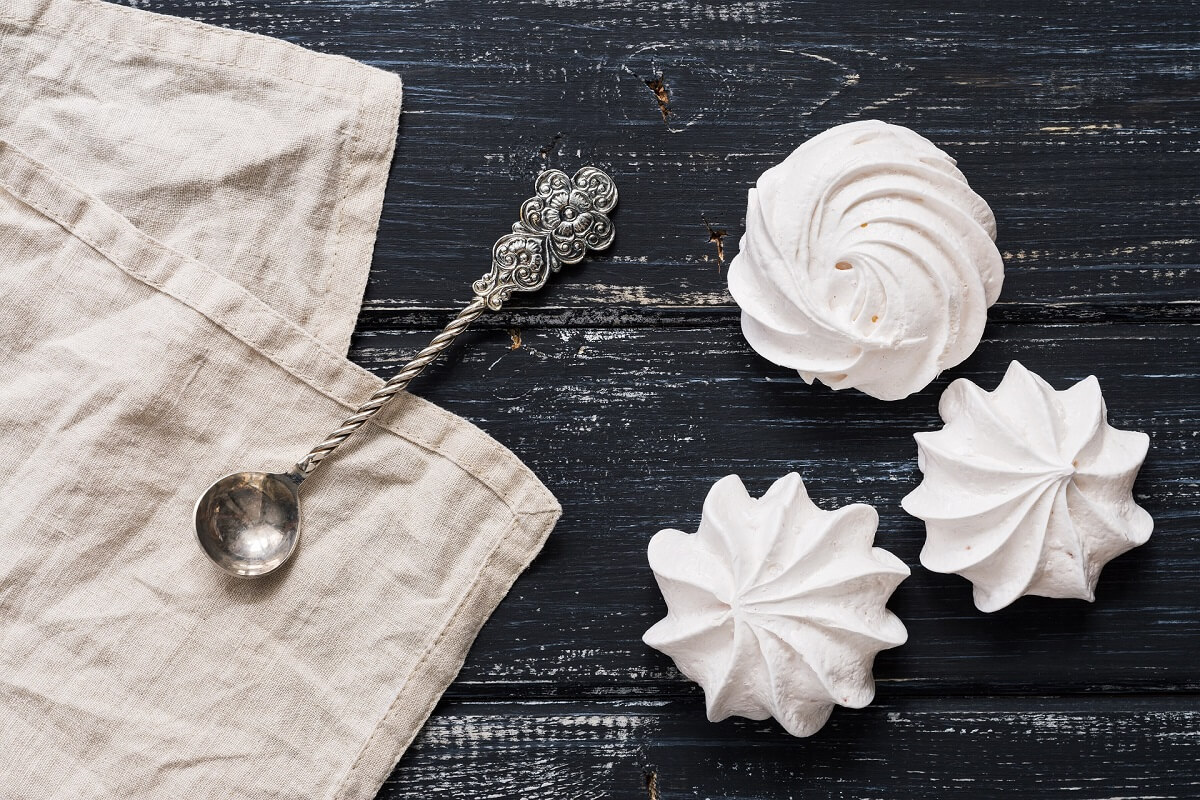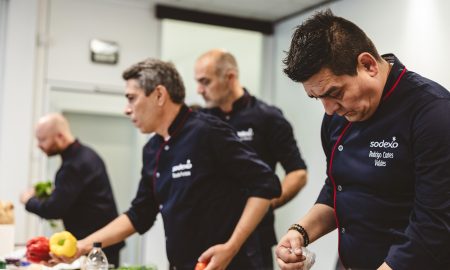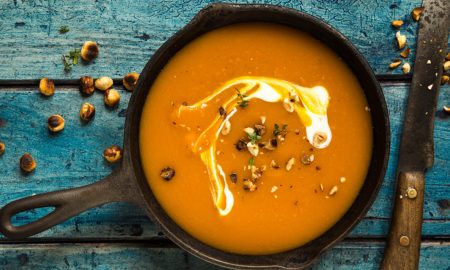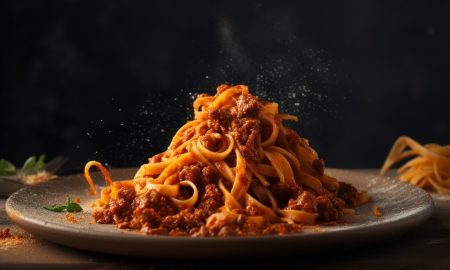Definition and origin of meringue
Meringue (Baiser in French, called [bɛzeː], which means kiss), is a pastry made from sweetened beaten egg whites. The origin of this frothy pastry is difficult to pinpoint. However, we assume it probably has its origins in Switzerland. This is where an Italian confectioner is said to have invented the pastry in the municipality of Meiringen (hence the name) as early as the 17th century.
Prerequisites for good meringues
Let’s assume we want to prepare meringues that can be eaten after baking. In this case, we need a product that is firm on the outside and if possible a nice white color, but still somewhat soft on the inside without being runny or sticky. Under no circumstances should the meringue become grainy. Our ingredients: egg whites, sugar and an electric mixer.
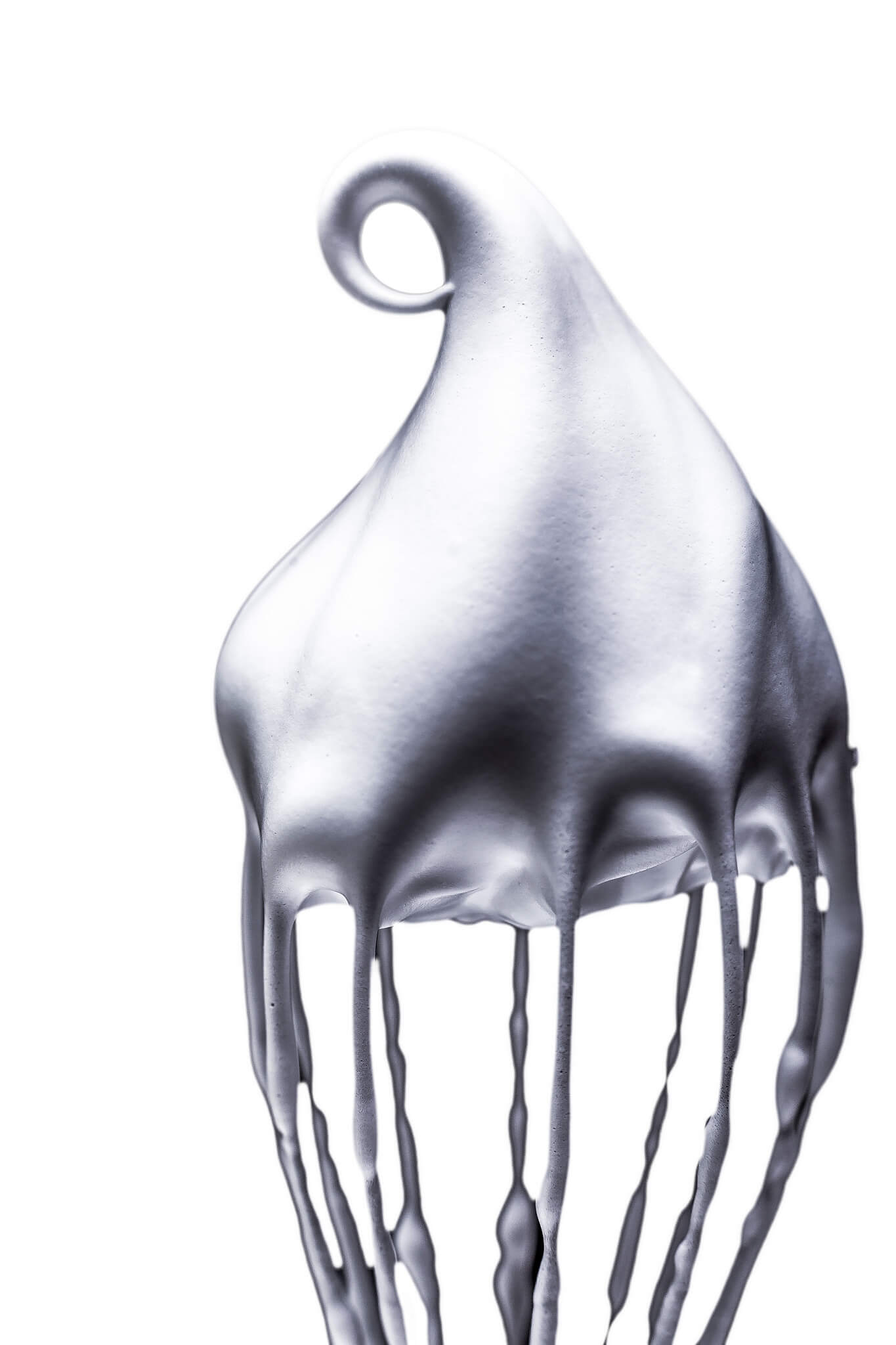
Image: AdobeStock | J.Pliacushok
Beaten, snow-white and firm – why?
First, we’ll beat the egg whites with the mixer. These egg whites consist of 90% water and 10% protein. As soon as the mixer is turned on, the beaters churn the egg whites so vigorously that they unfold and spread. They come into contact with each other and connect to form a network. As a result, they trap water and air, which increases the volume and changes the refractive index. For this reason, the foam compound turns white and firm. But unfortunately, the mass is not very stable because water escapes quickly.
Crux with sugar
Sugar must be added at this time. Unfortunately, this leads to difficulties, as the sugar prevents the proteins from binding to each other and makes it difficult for foam to form. If you beat the mixture by hand, you quickly notice that you now have to work harder to achieve the same results. If the sugar is added too early, it will even prevent the creation of nicely beaten egg whites.
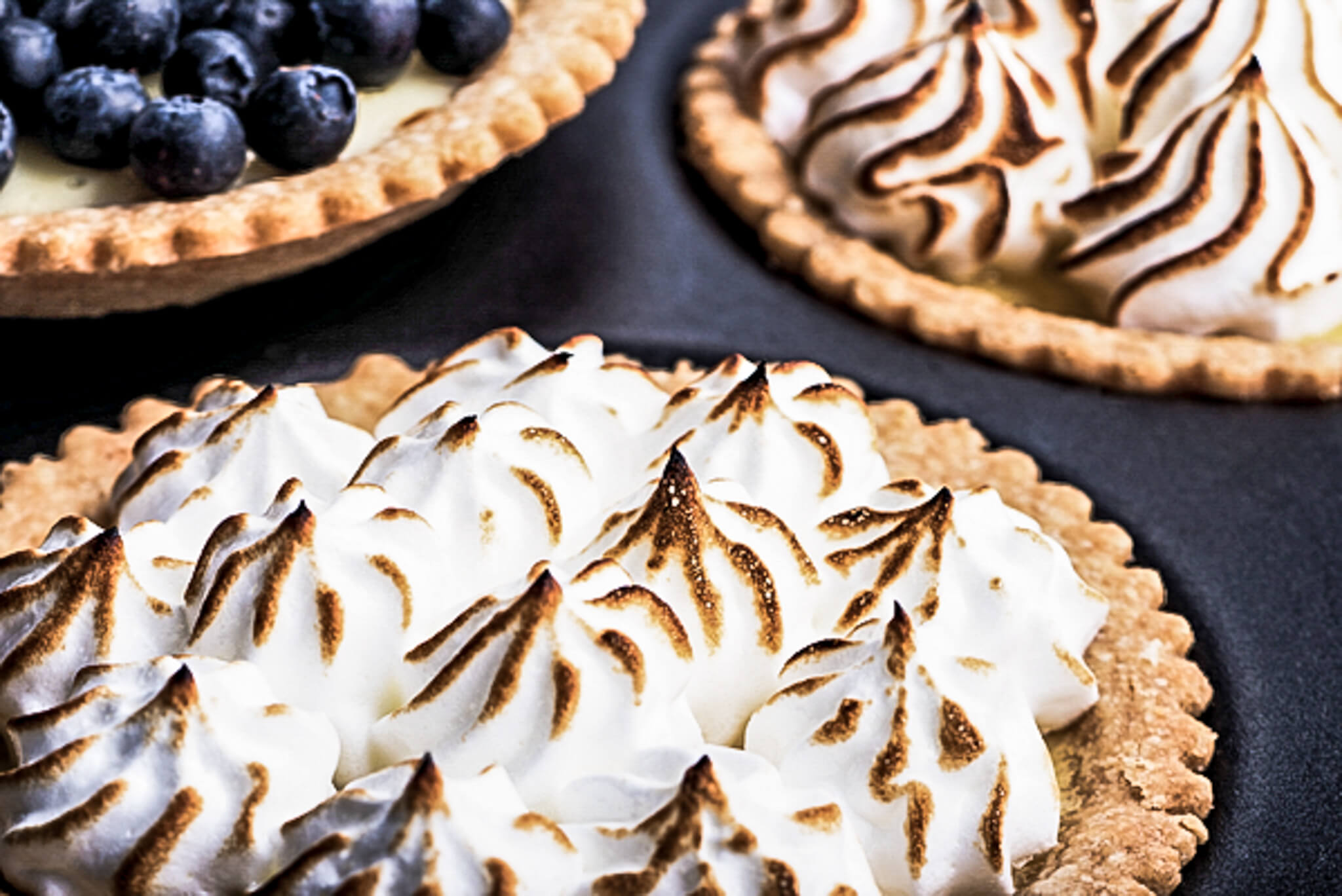
Image: Rational
Low baking temperature for optimal results
You can now use a piping bag to portion the beautiful, shiny, white mixture onto a baking tray and then bake it. The sugar syrup, which is integrated in the mixture, is now serving a great purpose: By raising the boiling temperature of the water to over 200 °F, the last globular proteins (ovalbumins) can denature at their leisure and complete the reinforcement of the internal structure. If there’s one thing you should avoid when baking, it’s the Maillard reaction and caramelization. The baking temperature must therefore be kept low. The meringues need to be dry, but must not turn brown under any circumstances. Now we take the meringues out of the oven and do not leave them in the open air, as they will quickly soften.
Two researchers from Istanbul University have concluded that storing egg whites in a container at 39 degrees Fahrenheit for 32 hours significantly improves the quality of the mousse. After that time, the quality of the foam will decrease. Should the egg whites be heated when beaten? The big difference between the Swiss and French version is that the former beat their eggs in a bain marie, while the latter beat them at room temperature. A team from the University of Leuven has investigated this phenomenon and the result is clear: If the eggs are particularly fresh, it is better not to heat them. If they’re already a few days old, though, it’s better to beat them in a bain marie. Is it bad when egg yolk ends up in the egg white? The clear answer here is: yes. According to an American study, only 1 mg of egg yolk in one egg white is enough to prevent foaming. What is the best way to bake meringues? Scientists and chefs agree: For this, it is best to use the meringue program, which is available on the RATIONAL iCombi. Perfect results guaranteed!


